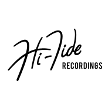Wild Surf Guitars from Insanitizers CD Review by Noel
I’m fascinated by the sound of music. Music was all around me while I was growing up. My dad was a professional musician. There were at least five pianos within ten minutes’ walk from home in my childhood neighborhood. At least one adult in each of those homes could play the piano decently, and some of their children, too. And Dad and his friends would get together regularly to play music at our house, a neighbor’s, or some other friends’ homes.
How do you like your records to sound? Do you prefer the exuberant, raw, vintage, live sound of musicians playing all together, recorded on analog tape with a couple of microphones hung from the ceiling on opposite sides of the room to provide stereo separation? Do you like the precision of tracking, where only the best individual takes from each musician are used, and which allow additional instruments to be added? Do you appreciate the perfection of heavy post-production, with added effects, every flaw removed and all the enhancements computer technology permits?
Creating the right sound is a goal I believe every performer desires, whether alone, on stage in front of an audience or in the recording studio. The definition of the right sound varies from artist to artist and often from record to record. Sometimes, as with Whimsical Surf Version 2 by the Insanitizers, dissatisfaction with an original effort leads to a complete redo, with new arrangements and production values.
Conrad Swartz is a tone-chaser. Not content to find the best tones he can get from stock guitars, he’s gone beyond the standard upgrades of tone pots, pickups and strings, to elaborate lengths and created a 5-pickup guitar capable of producing the very specific sounds he wants in his music. And, much like the way he experiments with his guitars, he experiments with his music, all in pursuit of discovering the many different ways a song can sound, and putting the best ones, for that moment in time, on record.
Quoting Conrad, “In developing my recordings I often ask other musicians and non-musicians I know for their impressions of my recordings. Then in response to their impressions, I often change acoustic qualities in the recordings, such as tones. Sometimes I will re-record a song.” And, “The surf guitar instrumentals (on Wild Surf Guitars) turned out so well that I am happy when I hear them. Tone-wise I focused on having a lively clear rock-n-roll guitar sound without harshness, shrill overtones, or thinness. This took a lot of care and numerous draft versions of each recording.”
And then there’s orchestration, again quoting Conrad. “One more comment about Wild Surf Guitars. If you listen to "Sympathetic Discharge" with headphones (as opposed to just a computer’s built-in speakers) you should hear several guitars and an organ playing different riffs together. I think this piece is far more interesting when you can hear all the many details.”
Also, making separate recordings of a song, as a solo, duet and a quartet, enables the creation of various arrangements of the same melody, each allowing a different interpretation of the music. It can be used to create vastly different soundscapes, the way a painter or photographer might represent the same scene at different times of day or in different seasons.
This long introduction resulted from listening to Wild Surf Guitars, which prompted several email conversations with its creator, Conrad Swartz. Surf music is in my opinion impressionistic, in that lacking vocals (mostly) surf must necessarily create its’ own impressions in the listener, emotional reactions and perhaps even visual imagery brought to mind by the combination of only the song title and the unfolding music.
What does the music on Wild Surf Guitars remind the listener of? It depends. Obviously the music itself creates its’ own impressions. But it also depends on the musical background of each listener. Depending on that background, each song may have the extra component of familiarity adding to the meaning of each song. There’s a lot of music behind this music. I’m not going to throw out spoilers or hints. Whether you find something in a song you know, or not, depends on you.
I find this record a very enjoyable listening experience. The songs are fun and very well-performed. There’s no hard-rock, metal, punk-based or post-apocalypse horror surf here. In that sense this is traditional surf. But the sound and feel of the whole record isn’t always that traditional, though a lot of it is remindful of that. There are other influences and it’s fun to pick them out. The songs are at turns traditional, clean and familiar, and at turns modern, edgy and sometimes unexpected. There are intertwining lead guitars as in “Surfarian” and “Feral Four” and several songs are played in flamenco style. About “Feral Four”, Conrad said, “The … duet was improvised by Michael (Brock) and me; what you hear is as the band played it.” Mostly, I think the songs on Wild Surf Guitars are expressions of a guitarists’ love of the guitar and the sound of guitar music.
The bonus vocal track, “Waterboard Surfing”, is experimental and intended as political musical comedy. Though there is debate about whether surf should incorporate such elements, political music, comic or otherwise, has a long and historic tradition.
I like Wild Surf Guitars a lot. The songs are catchy, well-played and fun to listen to.
Insanitizers on Wild Surf Guitars are principal guitarist, composer and audio engineer Conrad Swartz (performing Flamenco guitar as Rodriel), Tom Robertson (performing Flamenco guitar as Gabrigo), Ralf Palin, Michael Brock, Don Wenke and Michael Martin.
Insanitizers are on CDBaby at http://www.cdbaby.com/Artist/Insanitizers
Wild Surf Guitars is on CDBaby at http://www.cdbaby.com/cd/insanitizers4
—This is Noel. Reverb's at maximum an' I'm givin' 'er all she's got.
Last edited: Mar 04, 2014 13:43:56
































